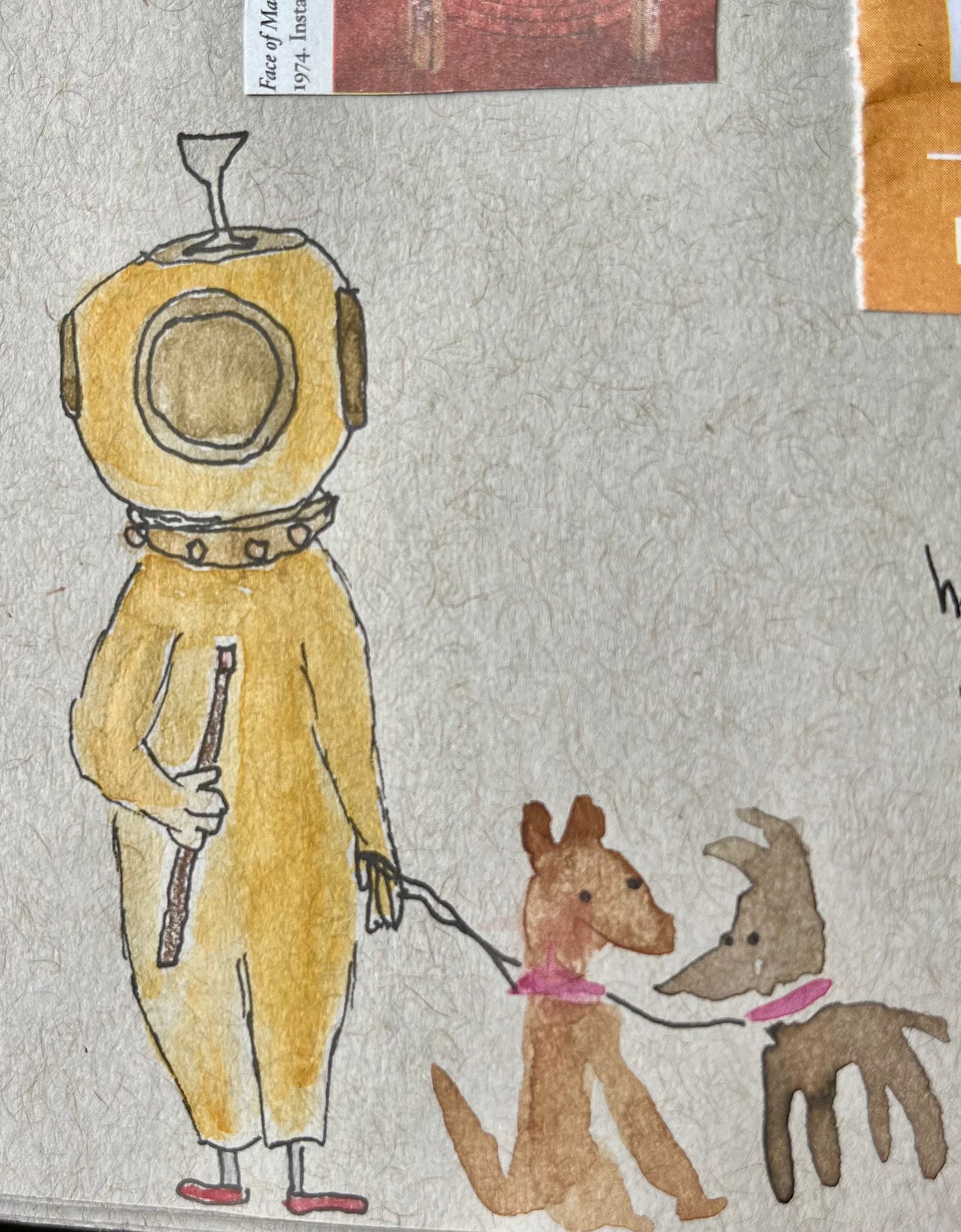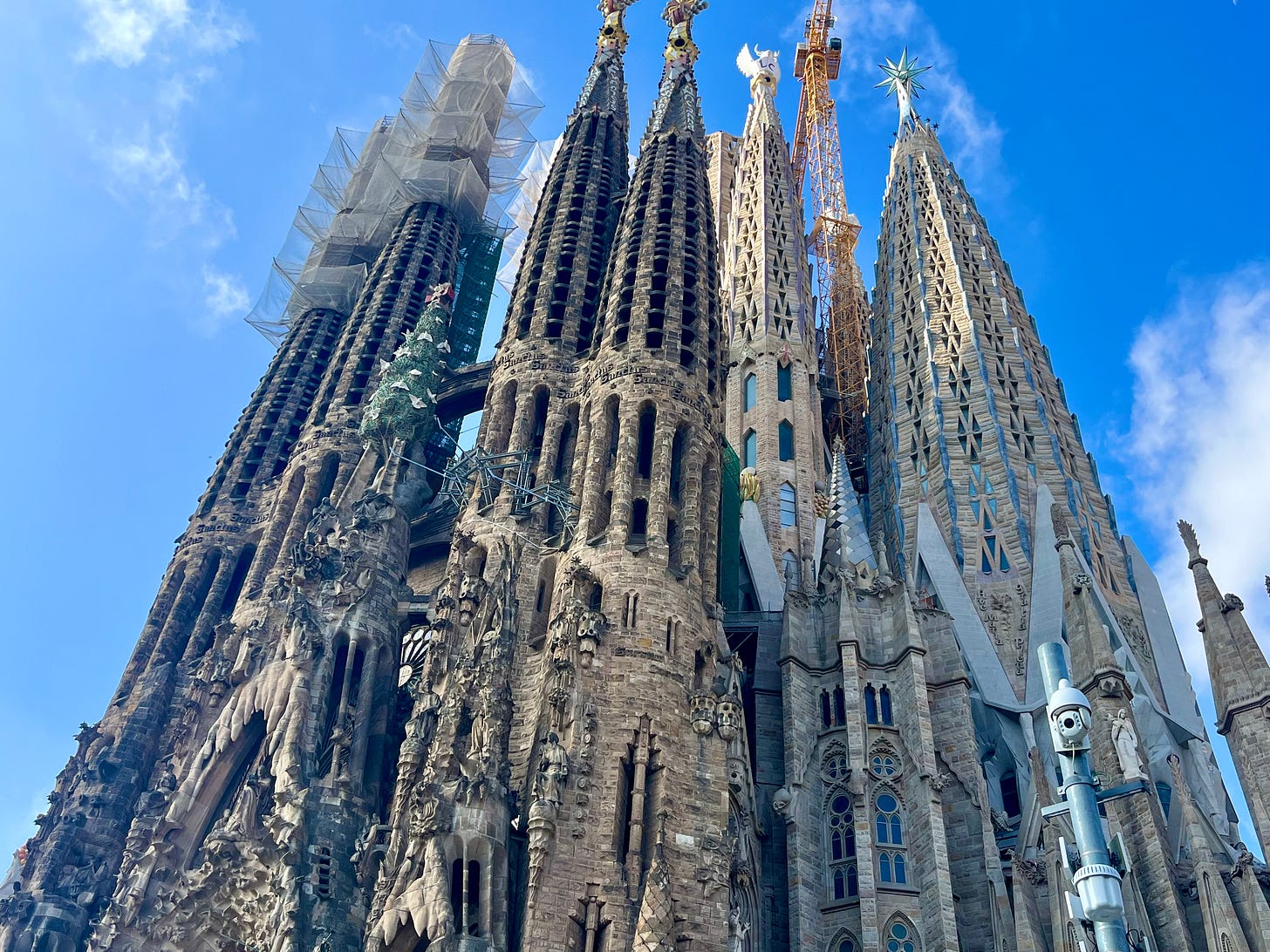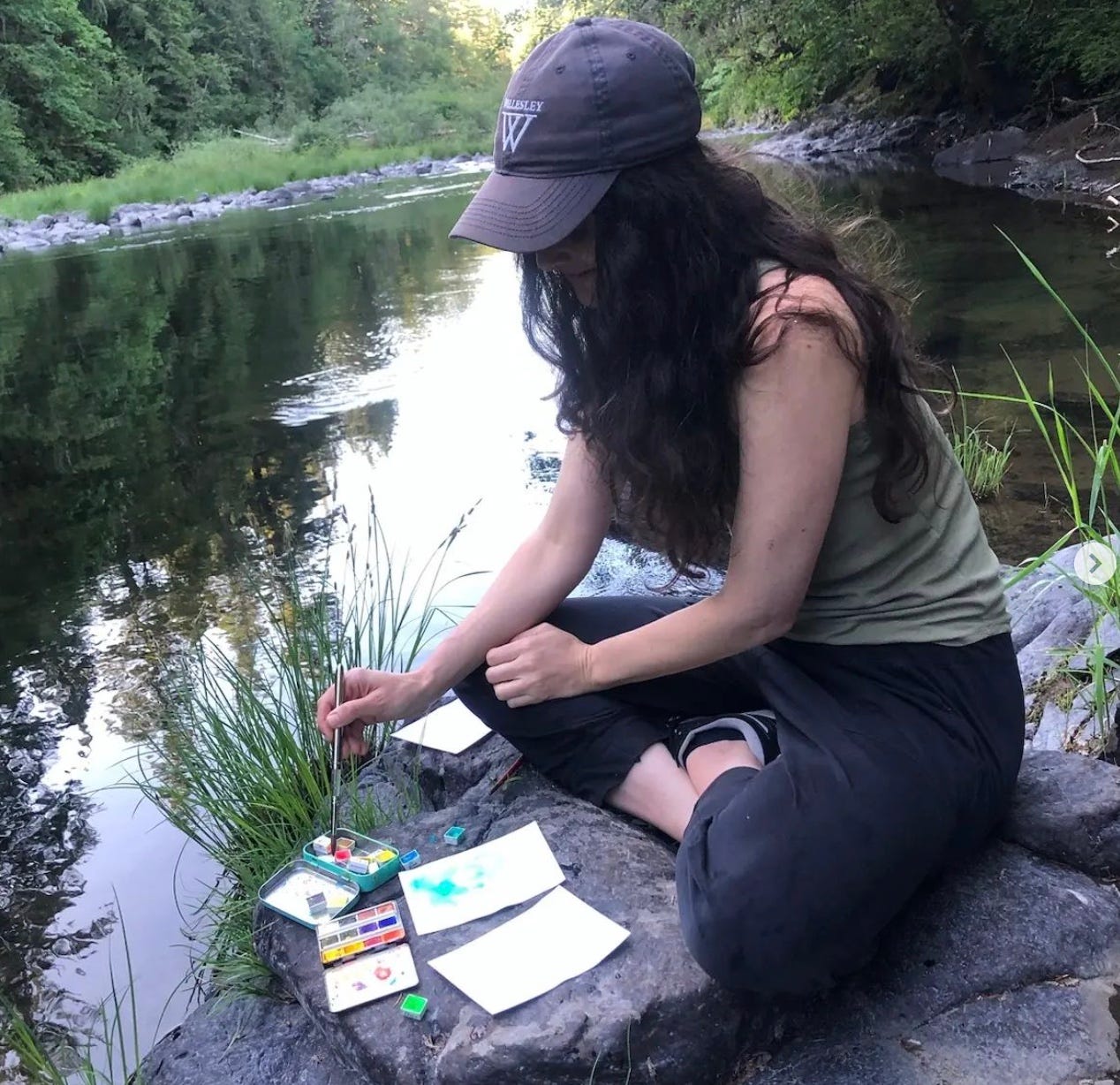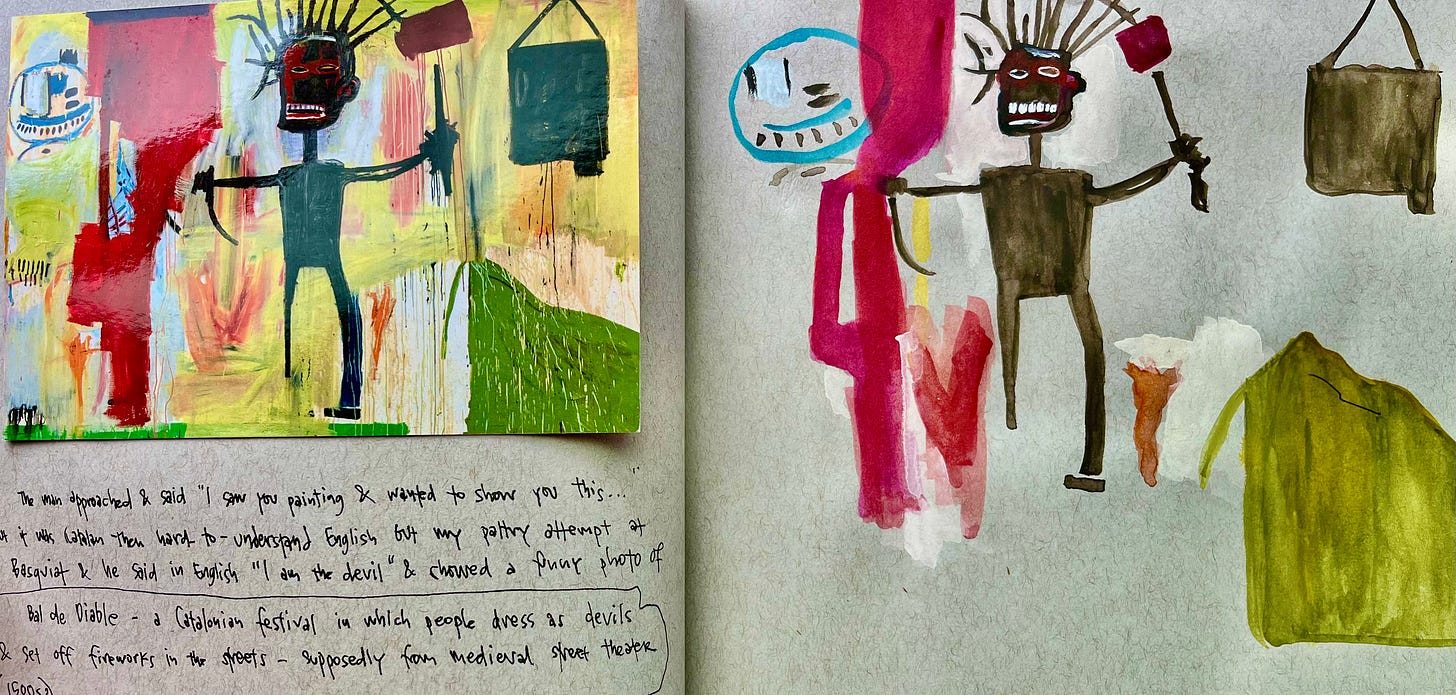On shabby eccentric artists, and sudden life interruptions
I am writing from inside week 5 of a 6-week sabbatical from my job at Street Books, where my only task while away is to avoid tasks altogether, to take it easy once and for all, to rest the brain and heart that has been focused on Street Books operations for more than 13 years. It is an incredible gift to be given a pause from one’s work, and I have used the time profoundly well, taking on a meditation practice, finishing a novel, writing daily letters and exercising two hours a day. The truth is, I haven’t done much. I’ve paid better attention to cloud formations, and risen early to set a line of peanuts out on the Peanut Board for my crow/scrubjay/squirrel friends. I’ve read heavy books out in the yard. I have even felt stirrings of boredom, which is an amazing sensation after years of packing the average day full with work and teaching gigs. It feels like some weeks away from my day job have allowed me to come apart a little, to disperse into many small parts, so that it takes considerable effort (and the biting of several fingernails) to reconstitute myself enough to compose this message. At any rate, I hope that you are well and enjoying the fall feeling that we’ve begun to have in Portland. Golden sunny days and crisp leaves, mist in the mornings sometimes.

In August I was lucky to travel in Spain with my family, to ramble up the Costa Brava, consume great meals and wine, and visit the Salvador Dalí museum in Figueres, (complete with the novelty of nighttime tickets for 10:15 pm, champagne on the rooftop terrace and a grainy film projection of him helping to set up the museum while he was still alive). One of my favorite stories of Dalí is that he once donned a diving suit to give a presentation at a surrealist dinner, where he held a pool cue in one hand, and 2 leashed dogs in the other. Partway through Dalí’s lecture, it began to get a little tight in that suit, and then he seriously couldn’t breathe, but as he flailed and staggered about, nobody was certain whether it was part of his act or not. That would be the tough part, right? Is the surrealist in front of you performing an ecstatic dance to punctuate his talk, or is he actively suffocating? In the end, enough of the audience went with the latter guess and helped to wrench off the suit, saving his life. And that is only one of the very weird things that transpired at the event.
We also visited the Sagrada Familia in Barcelona, the trippy, drippy sand castle of a cathedral that has been a work in progress since 1883. A lot of attention has been paid to the weird architecture and career of Antoni Gaudi, (to be sure, he led a fascinating life: a vegetarian who survived a bout of tuberculosis, evaded a cholera epidemic in Barcelona, was arrested and jailed for refusing to speak Spanish instead of his native Catalan, and so on), but the part of his story I felt most compelled by was not his life so much as his eventual death. On a June day in 1926, as he walked down the Gran Via de les Corts Catalanes, Gaudi was hit by a trolley. He was seventy-three by then, a gaunt figure with a wild beard, in tattered clothes. His shabby appearance resulted in a distinctly underwhelming emergency response by passersby, a kind of “Why bother with this beggar?” and by the time he was recognized, it was too late and he died of his injuries.

Maybe Antoni Gaudi’s accident stuck with me like it did because I’d traveled to Spain haunted by a recent traffic accident that occurred in my own neighborhood. The short version is that a young man drove a utility van too fast down the street and smashed into a parked car and into a woman standing nearby. The terrible sound of the collision concussed the air and drew neighbors to the scene, where we encircled the woman lying in the road, and supported her until the paramedics arrived. Her injuries were grievous and I was left so shaken by the violence of the accident, angry at the speed and distraction that had caused it in the first place. In the night I replayed the scene, worrying about the woman and wondering if her family had been contacted. Because we had gathered her belongings from her smashed car, I’d seen her license and knew that her name was Alyna. The next day, I searched for her online and I found a photo she’d posted in June, along with a note to a friend: “Hoping this is the summer of watercolor at the river..”

Hoping this is the summer of watercolor at the river..
As I traveled through Spain with my family, Alyna stayed on my mind. I thought of her when I sat with my children at a cafe with our little watercolor sets open, painting castle walls and people and animals. I thought of her when I waded into the Mediterranean sea and sat in the hot sand. Life flowed on for us and for so many people who lived blithely ignorant of the sudden, random rupture that can split a life in half, or end it altogether. By then I knew that Alyna had suffered a traumatic brain injury, but that after several emergency surgeries, she’d survived. She is surrounded by her family and friends in Portland and has recently wakened from a coma. The crash altered the course of her summer and her life, but it’s not the only part of her story. She is an artist and baker and massage therapist. During the pandemic, Alyna created recipes illustrated with watercolor and invited people to make and share them during quarantine. It is clear she is a lovely person who is attuned to the world and seeks to make it better and more beautiful for those around her.
So, I’d like to dedicate this month’s Truth & Dare to Alyna and invite you to participate in an artistic gesture on her behalf. First thing: can we pledge to do a collective slowdown, an inhaled breath, a recalibration on how we drive and what we focus on while driving? The accident that injured Alyna was definitely caused by speed and distraction, which is increasingly common in our city and across our country. Wherever we’re going isn’t more important than protecting one another, but it’s easy to go too fast. Let’s enter a collective slowdown together.
Next: One of the best parts of traveling was the time we spent sitting in a cafe or park, writing or doodling or painting in our notebooks. Both my kids (ages 19 and 16) expressed the hope that they could continue the practice back in the States, once they went back to university/high school schedules.
So that brings us to our Truth & Dare:
Truth: Pretend you are a tourist in your own city. Take a notebook to a cafe, order a hot drink and do an observational entry based on the people and surroundings you see. Pay attention like you would in a foreign city.
Dare: Choose a recipe from Alyna’s beautiful collection, prepare it and share it with another person.
Double Dog Dare: Post a photo of/note about your creation in the comments.
That’s it for this month. I love you. Go slow. Make art. Throw your phone over one shoulder and don’t look where it lands. Practice art by copying a master.
